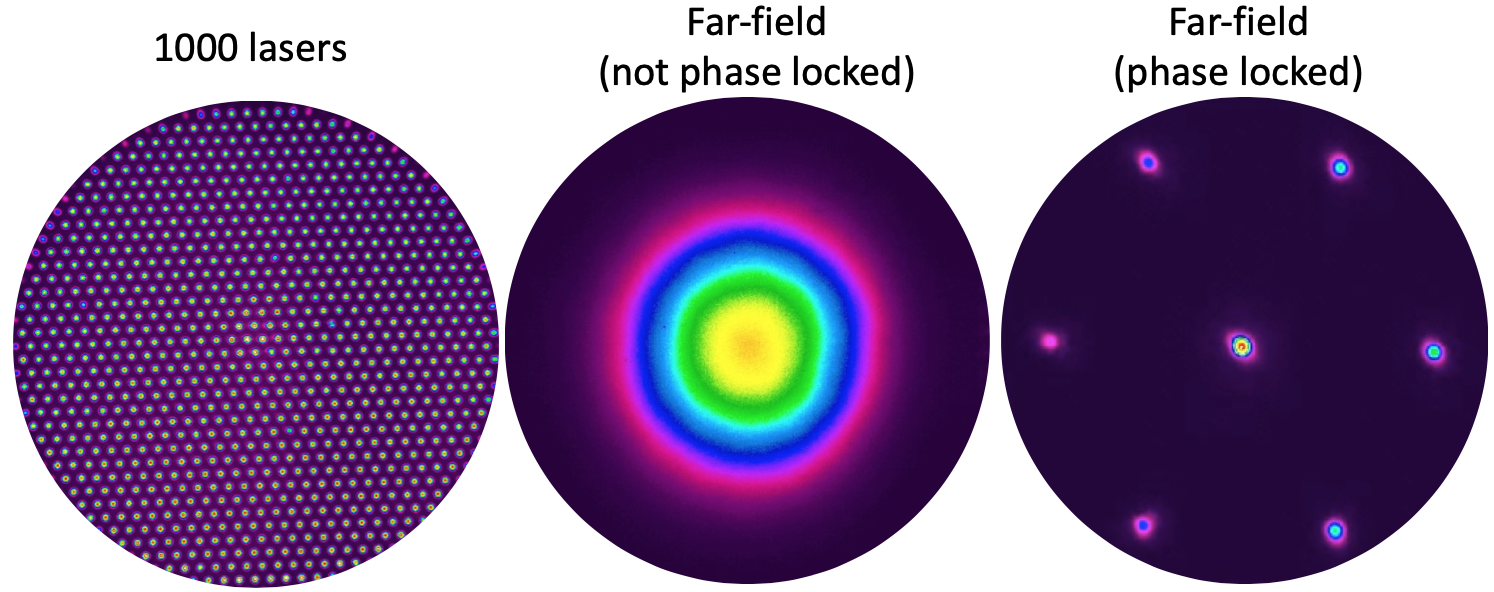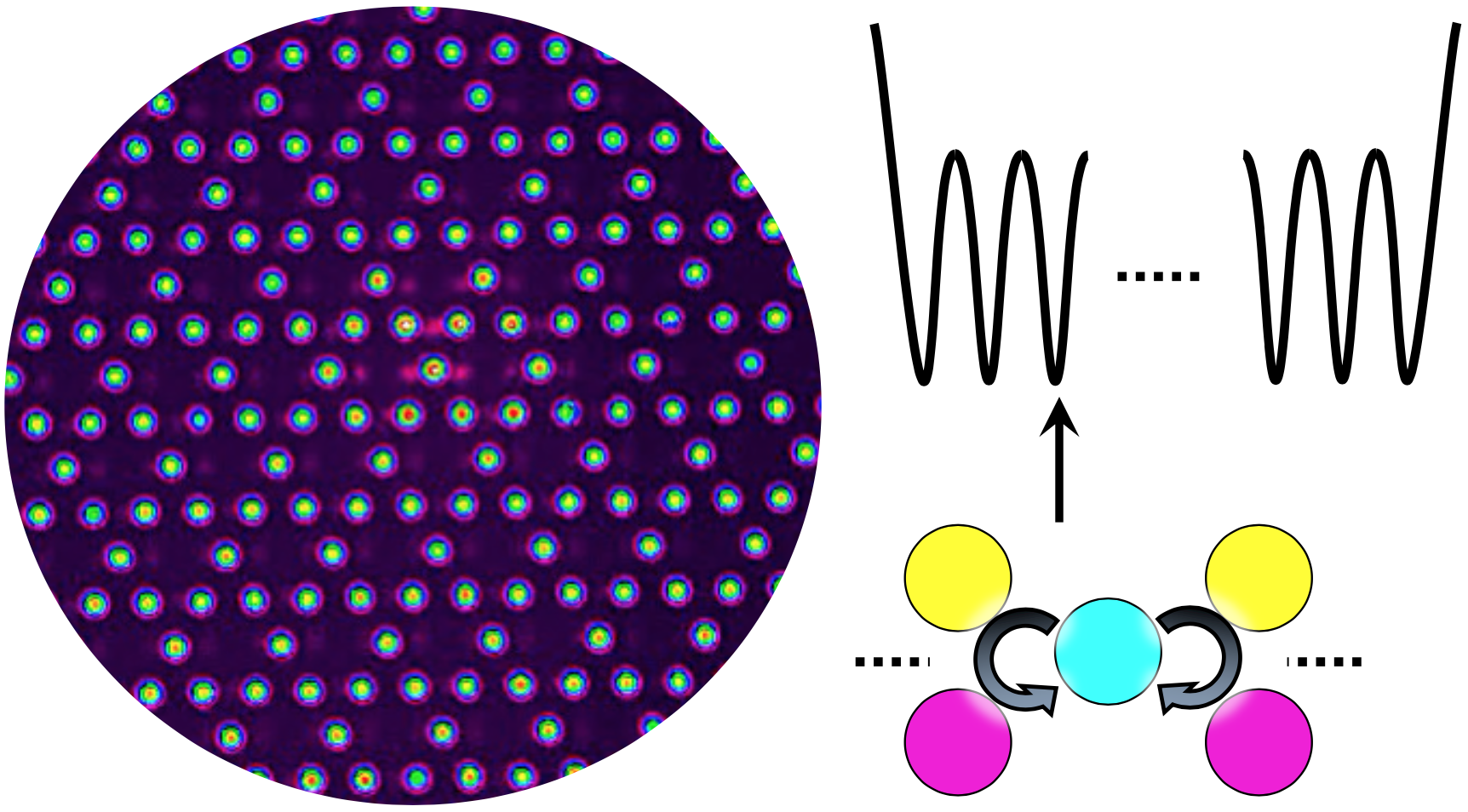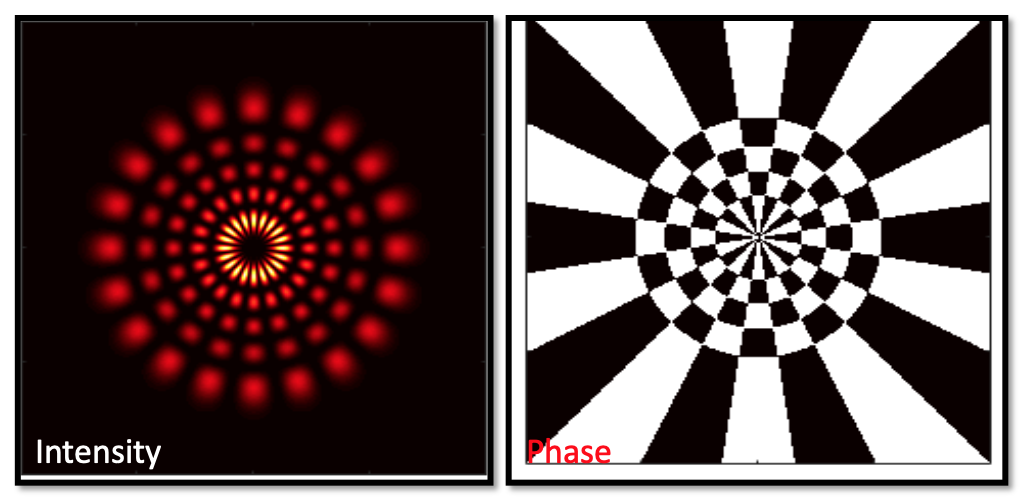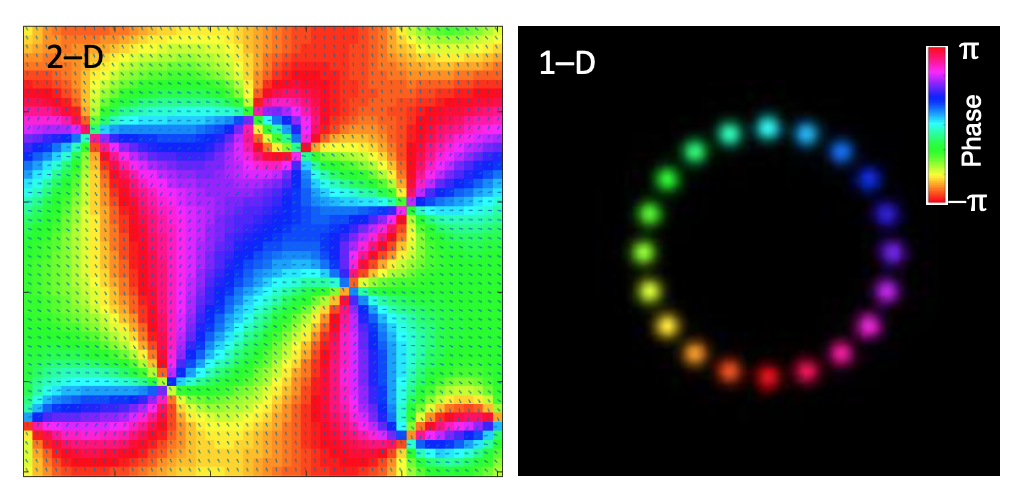Indian Institute of Technology Ropar Department of Physics
Laser Physics Lab
RESEARCH
Phase locking of lasers (generating high powers)

Lasers are the key components for many branches of science and technology and also serve as fundamental tools for studying other systems. Particularly, lasers with very high power and ideal beam quality have a large potential in scientific research, material processing, communication, medical, industrial and defense applications, and research in this direction has been in progress ever since the invention of lasers. High-power lasers often have beam quality, stability, and heat dissipation inferior to those of lower-power lasers. The phase locking of several lasers is a promising approach to synthesize high-power optical sources with ideal beam quality. However, the phase locking of many lasers is a challenging task, since it requires, at the very least, a common lasing frequency to all the lasers, a prospect that vanishes exponentially with the number of lasers. Our group activities are focused on to find solutions to overcome such limitations, and thereby to push the upper limit on the number of lasers that can be phase locked, and hence to increase the output powers while maintaining the ideal beam quality.
References:
S. Mahler, M. L. Goh, C. Tradonsky, A. A. Friesem, and N. Daivdson, "Improved phase locking of laser arrays with nonlinear coupling," Physical Review Letters 124, 133901 (2020).
M. Nixon, E. Ronen, A. A. Friesem, and N. Davidson, "Observing geometric frustration with thousands of coupled lasers," Physical Review Letters 110, 184102 (2013).
V. Pal, S. Mahler, C. Tradonsky, A. A. Friesem, and N. Davidson, "Rapid fair sampling of the XY spin Hamiltonian with a laser simulator," Physical Review Research 2, 033008 (2020).
C. Tradonsky, V. Pal, R. Chriki, N. Davidson, and A. A. Friesem, "Talbot diffraction and Fourier filtering for phase locking an array of lasers," Applied Optics 56, A126 (2017).
C. Tradonsky, M. Nixon, E. Ronen, V. Pal, R. Chriki, A. A. Friesem, and N. Davidson, "Conversion of out-of-phase to in-phase order in coupled laser arrays with second harmonics," Photonics Research 3, 77 (2015).
M. Nixon, M. Friedman, E. Ronen, A. A. Friesem, N. Davidson, and I. Kanter, "Synchronized cluster formation in coupled laser networks," Physical Review Letters 106, 223901 (2011).
M. Nixon, M. Friedman, E. Ronen, A. A. Friesem, N. Davidson, and I. Kanter, "Controlling synchronization in large laser networks," Physical Review Letters 108, 214101 (2012).
Coherent computing with coupled lasers

Optimization plays a crucial role in making decisions and in analyzing systems. Specifically, it deals with finding the best solution from among many feasible solutions (for example, traveling salesman problem). Such problems are ubiquitous across social science, biology, chemistry, physics, engineering, computer science, big data and artificial intelligence. Many such problems are classified as computationally hard problems (belong to non-deterministic polynomial time (NP)-hard or NP-complete complexity classes), and solving them efficiently has been beyond the reach of modern computers. Solving them efficiently and rapidly with physical systems has become an emrging field of research. Physical optimization relies on finding the ground state of a complex system as a physical analogy to the optimization problem.
There has been significant interest in building efficient solvers that are based on physical systems, and recently some of have realized. These include solvers that invlove coupled lasers, Bose-Einstein condenstae (BEC) polaritons and optical parametric oscillators. Particularly, our activities are focused on to build a rapid and efficient solver based on coupled lasers to solve these class of problems.
References:
V. Pal, S. Mahler, C. Tradonsky, A. A. Friesem, and N. Davidson, "Rapid fair sampling of the XY spin Hamiltonian with a laser simulator," Physical Review Research 2, 033008 (2020).
C. Tradonsky, I . Gershenzon, V. Pal, R. Chriki, A. A. Friesem, and N. Davidson, "Rapid laser solver for the phase retrieval problem," Science Advances 5, eaax4530 (2019).
V. Pal, C. Tradonsky, R. Chriki, A. A. Friesem, and N. Davidson, "Observing dissipative topological defects with coupled lasers," Physical Review Letters 119, 013902 (2017).
M. Nixon, E. Ronen, A. A. Friesem, and N. Davidson, "Observing geometric frustration with thousands of coupled lasers," Physical Review Letters 110, 184102 (2013).
M. Nixon, O. Katz, E. Small, Y. Bromberg, A. A. Friesem, Y. Silberberg, and N. Davidson, "Real-time wavefront shaping through scattering media by all-optical feedback," Nature Photonics 7, 919 (2013).
Laser beam shaping

Generation of optical fields with complex spatial and temporal distribution has attracted considerable interest due to numerous applications, both in fundamental science as well as engineering applications, in various fields. Typically, the output from a laser source consists of a Gaussian distribution, which is undesirable for many applications. However, in recent years, it has become possible to control the distribution of light in the spatial and temporal domain, which allows to produce spatially variant polarization states, exotic phase structures and tailored intensity patterns. The structured light with a daisy-petal-like intensity pattern was used to probe planer and non-planner surface displacements at picometer scale resolution. This has opened a route to measure weak radiation pressure and optical manipulation of liquid/solid interface that possess the potentials for applications in opto-fluidics, microfluidics, and gravitational waves detection. A synthetic chiral structured light was shown to efficiently control chiral light-matter interaction, and provides the possibility for drug development. The optical vortices were exploited to probe magnetism in materials. The well- known Rayleigh limit was sown to overcome by structured illumination, and thus allowed to achieve super- resolution in the imaging techniques. Very recently, compressive three-dimensional super-resolution microscopy with speckle-saturated fluorescence excitation was demonstrated. Further, polarization based speckle-field digital holograpic microscopy was also shown to probe features in the biological tissues with enhanced spatial resolution and controlled coherent noise reduction. Moreover, structured light is also deployed in many other fields, such as optical metrology, optical communications, optical trapping and manipulations, and atomtronic devices.
Our group activities are focused on controlled laser beam shaping involving intra- and extra- laser cavity configurations. The main focus is to acheive the high quality structured light with high powers, extended depth of focus, and applicable to a wide spectral range.
References:
V. Pal, C. Tradonsky, R. Chriki, N. Kaplan, A. Brodsky, M. Attia, N. Davidson, and A. A. Friesem, "Generating flat-top beams with extended depth of focus," Applied Optics 57, 4583 (2018).
A. N. K. Reddy, and V. Pal, "Robust design of diffractive optical elements for forming flat-top beams with extended depth of focus," Applied Physics B 125, 231 (2019).
V. Dev, A. N. K. Reddy, and V. Pal, "Generation of uniform-intensity light beams with controllable spatial shapes," Optics Communications 475, 126226 (2020).
R. Chriki, G. Barach, C. Tradonsky, S. Smartsev, V. Pal, A. A. Friesem, and N. Davidson, "Rapid and efficient formation of propagation invariant shaped laser beams," Optics Express 26, 4431 (2018).
C. Tradonsky, S. Mahler, G. Cai, V. Pal, R. Chriki, A. A. Friesem, and N. Davidson, "High-resolution digital spatial control of highly multimode laser," Optica 8, 880-884 (2021).
V. Dev, A. N. K. Reddy, A. V. Ustinov, S. N. Khonina, and V. Pal, "Auto-focusing and self-healing properties of aberration laser beams in a turbulent media," Physical Review Applied 16, 014061 (2021).
Topological photonics

The topological photonics has emerged a new exciting field of research, where the application of topology is creating a range of new opportunities throughout the photonics. The topology has emerged as another degree of freedom, which opens a new door for the discovery of fundamentally new states of light and possible revolutionary applications. For example, potential practical applications of topological photonics include photonic circuitry that is less dependent on isolators and slow light that is insensitive to disorder. Few more demonstrations of topological effects were realized in photonic crystals, coupled resonators, waveguides, metamaterials and quasicrystals. Our group activities are focused on to investigate topological effects in a non-Hermitian system of coupled lasers.
References:
V. Pal, C. Tradonsky, R. Chriki, A. A. Friesem, and N. Davidson, "Observing dissipative topological defects with coupled lasers," Physical Review Letters 119, 013902 (2017).
A laser model for cosmology, Nature 549, 163 (2017).
Cooperating lasers make topological defects, APS Focus story –https://physics.aps.org/articles/v10/79
S. Mahler, V. Pal, C. Tradonsky, R. Chriki, A. A. Friesem, and N. Davidson, "Dynamics of dissipative topological defects in coupled phase oscillators," Journal of Physics B: At. Mol. Opt. Phys. 52, 205401 (2019).